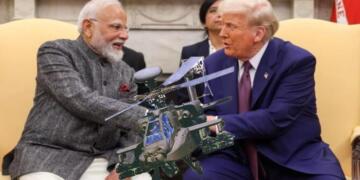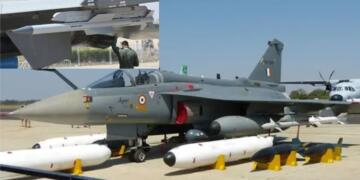Remember, 15th June 2020? This was the day when the Indian Army and the Chinese PLA clashed with each other at Galwan Valley. 20 Indian Army soldiers had given the Supreme sacrifice in the nasty face-off, whereas around 45 Chinese troops are estimated to have been hacked to death.
The Chinese had faced heavy casualties last year despite their dastardly attempt to take on Indian soldiers with medieval-era sharp weapons. However, if the Chinese make a second attempt to attack Indian soldiers in a dastardly way, they will face even bigger losses because the Indian Army is also equipping itself with some ‘unorthodox’ weapons.
What kind of weapons did the Chinese use in Galwan
India and China have a ‘no guns’ treaty as per two agreements signed in 1996 and 2005. There are differing perceptions of the Line of Actual Control (LAC)- the de facto Indo-Tibet border and therefore troops of the two countries often end up engaging in verbal spats and scuffles. Since guns are not used, the troops often end up having fistfights and due to the better training and fitness levels of Indian Army troops, the Chinese usually go back with a bloody nose.
Therefore, during the Galwan Valley clash last year, China tried to change the rules of engagement. The PLA brought in unconventional weapons including clubs, iron rods, spiked nail bats, sticks embedded with nails and heavy stones.
During another face-off in Eastern Ladakh in September, the Chinese also used ‘Guandao’ a variant of the Chinese pole weapon used in some forms of Chinese martial arts. It typically comprises a blade mounted atop a long wooden pole.
'Guandao'
The medieval weapon which China's PLA troops were carrying while trying to attack an Indian post on south bank of Pangong Tso in Ladakh on September 7. pic.twitter.com/9pPf7J8B1e
— Achinta Borah (@achintaborah) September 10, 2020
China faced heavy losses despite using unorthodox weapons
China was looking to bully India. So, it came up with unconventional weapons. However, the Chinese PLA was still no match for the Indian Army in terms of valour, professionalism and combat. The Indian Army is right at the top when it comes to high altitude warfare and is much better acclimatized to the conditions of Eastern Ladakh than the inexperienced Chinese PLA.
Therefore, despite its numerical superiority and use of unconventional and barbaric weapons, China suffered much higher casualties in the Galwan Valley. In fact, an embarrassed China has tried its best to hide the casualty numbers:
- Initially, China claimed that it suffered no casualties. Then, it thought- let’s be realistic. So, it admitted that five Chinese soldiers were killed.
- US intelligence believes that 35 Chinese soldiers were killed.
- Russian news agency TASS reported that 45 Chinese soldiers were killed.
- Union Minister General (read.) VK Singh said that at least 40 Chinese soldiers were killed.
China, therefore, ended up losing at least twice the number of troops as compared to India’s casualties. This really shows that the Chinese PLA is an incompetent military force of cowards.
India comes up with unconventional weapons of its own
Well, if China thinks it can use medieval weapons to bully India, it should not forget that Indians know the art of warfare and have been using weapons for ages.
In fact, an Uttar Pradesh-based firm has developed non-lethal weapons like ‘Trishul’, ‘Vajra’ and a tasing equipment called ‘Sapper Punch’ for the Indian Army. Mohit Kumar, Chief Technology Officer of Apasteron Private Limited told ANI, “We were asked by the Indian security forces to develop non-lethal equipment after the Chinese used wired sticks and tasers against our soldiers in the Galwan clash. We could also see the Chinese showing their traditional weapons during deployments.”
A UP-based firm has developed non-lethal weapons inspired by traditional Indian weapons for security forces
Security forces asked us to develop non-lethal weapons after the Chinese used wired sticks, tasers against our soldiers in Galwan clash: Mohit Kumar, CTO, Apastron Pvt Ltd pic.twitter.com/5rOinDuGIK
— ANI (@ANI) October 18, 2021
These weapons have historical significance in India:
- Trishul, a short-handled weapon is mounted on a metal stick with three pointed ends. It is the principal weapon of Bhagwan Shiva and is also one of the weapons used by Mother Goddess Durga to slay demonic forces.
- Vajra or thunderbolt is associated with Indra, the God of rain, storms and lightning. It is a type of club with a ribbed spherical head.
Kumar said, “‘Vajra’, a metal road taser with spikes can be used for both tasing & in hand to hand combat as well as to puncture bullet proof vehicles. The ‘Trishul’ can be used for tasing as well as blocking vehicles of enemy.” He added, “A tasing equipment called ‘Sapper Punch’ to be worn like a protection gloves and can be used to give a blow with a current discharge to the enemy. None of the non-lethal weapons can cause deaths or any serious injuries”.
If China tries to pull a fast one on India again, the Indian troops are ready with a post-Galwan answer for the PLA troops, which should actually send chills down China’s spine.































